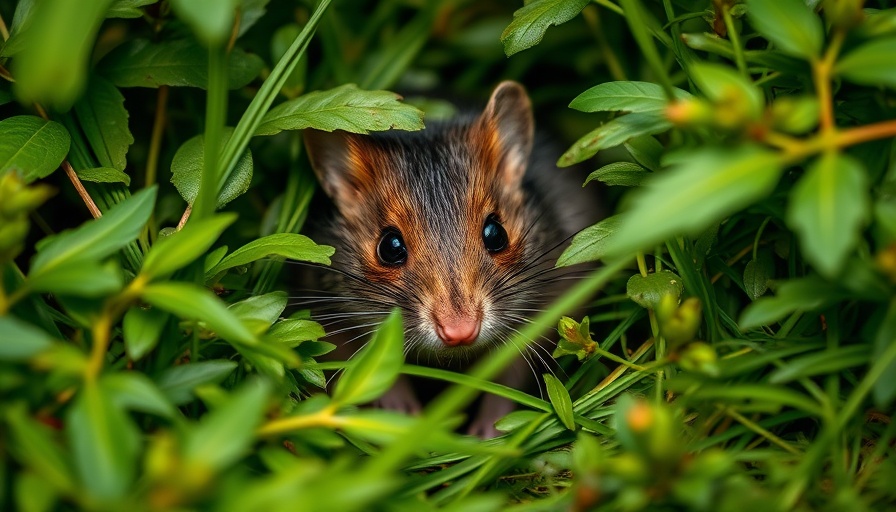
Understanding ‘Ratmageddon’ in the UK
The term ‘Ratmageddon’ is becoming increasingly frequent in the UK as pest experts raise alarms about surging rat populations. A wave of reports indicates that rats are not only more abundant but are also growing in size, driven by environmental factors and human behavior.
Why Are Rat Populations Increasing?
Experts suggest a combination of warmer weather and an excess of easily accessible food has created ideal breeding conditions for rats. Robert Collins from MyJobQuote.co.uk notes a staggering 20% increase in pest control requests concerning rats since 2023. With milder winters allowing year-round breeding, a single female rat can contribute to a rapidly expanding population, producing up to 42 offspring each year.
Cities have exacerbated the problem with overflowing bins and less frequent rubbish collections, drawing in tons of trash that serves as a feast for these rodents. Recent reports indicate over half a million rat-related issues were documented by councils last year alone, particularly concentrated in urban areas like London.
Health Risks are Real
It’s not just the sight of a rat that’s concerning but also the health risks they pose. Rats are known carriers of various diseases, including leptospirosis and hantavirus. Collins alerts that transmission occurs through direct contact with contaminated waste, potentially presenting serious health threats to urban dwellers.
Resistance to Control Measures
Adding to the urgency, rats are becoming resistant to common rodenticides. A study from the University of Reading revealed a genetic mutation making them immune to traditional poisons. This evolving resistance means that urban planners and pest control services must rethink their strategies in handling rat infestations.
Examples of Current Epidemics
The surge in rat populations is not an isolated UK issue. Reports from cities worldwide, including New York and San Francisco, tell a similar tale. In particular, experts have noted that rising temperatures worldwide correlate with increased rat activity, suggesting that climate change is driving this trend in cities globally.
Taking Control: What Can Be Done?
When facing a rat problem, the first step is understanding rat behavior. They are neophobic, meaning they are cautious around new food sources, which complicates effective use of rat poisons. The focus should shift towards eliminating food sources rather than relying solely on chemical solutions. Initiatives like New York City’s requirement for rat-proof bins can help significantly reduce food availability to rats.
A Call to Action for Communities
Community awareness and involvement are crucial in combating this issue. Residents must actively participate in keeping their environments clean. If you’re a homeowner or property investor, now is the time to consider strategies for pest control in your properties. Regular maintenance can play a critical role in preventing infestations.
As we see more families living in dense urban neighborhoods, the challenge grows. As suggested by Dr. Bobby Corrigan, we must focus on our cities' environmental management and hygiene practices to prevent the rat population from spiraling out of control.
Conclusion: Keeping Our Families Safe
The implications of rising rat populations are more than just an eyesore. They present serious health risks that affect families everywhere, especially in densely populated areas like Dumfries. By understanding and tackling these issues collectively, we can create a healthier living environment while protecting our homes from the wraths of ratmageddon.
Moving forward, let’s prioritize community efforts to keep our spaces clean, ensuring we encourage a rat-free home for our families and ourselves. For homebuyers and investors in the Dumfries market, integrating comprehensive pest control strategies into property management standards can provide peace of mind amid this concerning trend.
 Add Row
Add Row  Add
Add 





Write A Comment